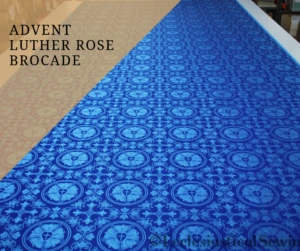
Prepare for the Advent season with Ecclesiastical Sewing’s exclusive Luther Rose Brocade and St. Margaret Brocade in vibrant royal blue. These liturgical fabrics are perfect for creating stoles, chasubles, and altar hangings.
Like this:
Like Loading...
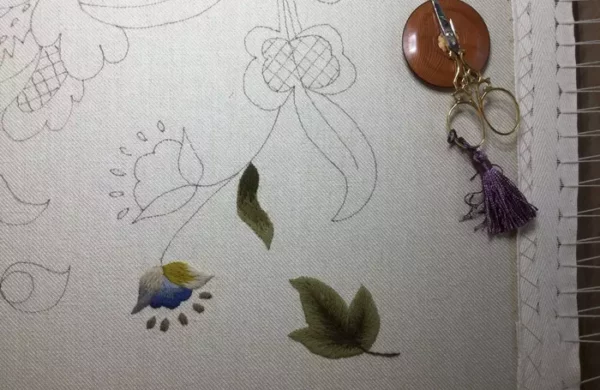
Special wooden frames and stands make embroidery easier and more enjoyable. These tools, crafted with care, are strong and smooth. They’re great for big projects, giving stability and comfort while you work. Adjust the stands to make embroidery even more fun!
Like this:
Like Loading...
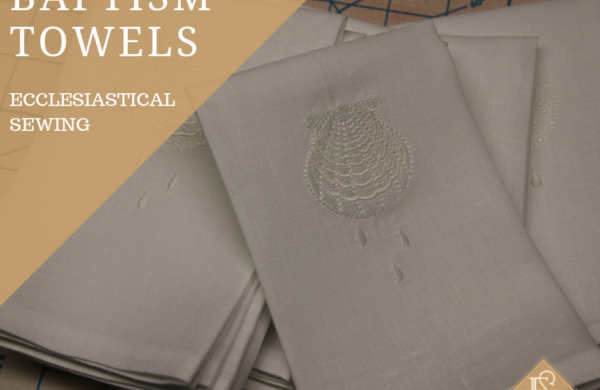
Prepare for fall by reviewing altar linens, checking inventory, and tidying storage. Examine baptismal items, altar hangings, server gowns, and clergy vestments. Ensure everything is in good condition, make repairs if needed, and consider replacements for worn-out items. Keep the Lord’s house well-maintained and ready for worship.
Like this:
Like Loading...
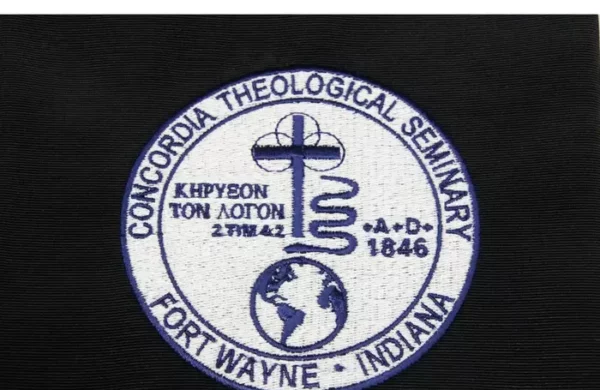
At Ecclesiastical Sewing, we have been working to create many new machine embroidery designs and will try to get those introduced as quickly as possible. The embroidery designs will include symbols, logos, whitework designs, and seasonal designs.
Like this:
Like Loading...
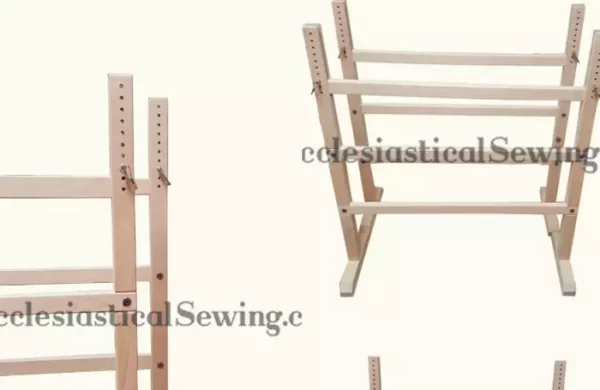
The trestle stands and frames found on our website at Ecclesiastical Sewing are made from beech wood. You may see oak listed as a wood selection for a few of the slate frames. We have a few oak frames still available and they have been wonderful. But all of our frames in the future will be made using beech. Beech is a hardwood, but the grain is finer and that works so beautifully for these products.
Like this:
Like Loading...

The tippet pattern is one of the many church vestment sewing patterns available through our Ecclesiastical Sewing online storefront. The tippet pattern is sized to have a nice length and width. Tippets are worn with a surplice and cassock as part of the choir dress. They are used for the offices of morning and evening prayer or at other times when Holy Communion is not served.
Like this:
Like Loading...
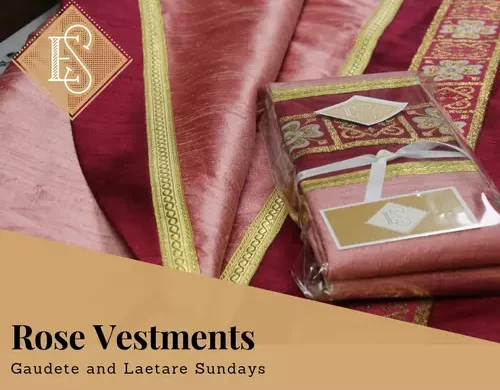
Gaudete is a special Sunday in Advent when the readings have a lighter tone in the middle of what is a Penitential Season. This is the third Sunday in Advent when a rose or pink candle is lit on the Advent wreath. The color change reminds us that Christmas is near. We only need to wait a bit longer and our Alleluia will resound once again. Lent is also a Penitential Season of the church year. Laetare is on the fourth Sunday in Lent
Like this:
Like Loading...
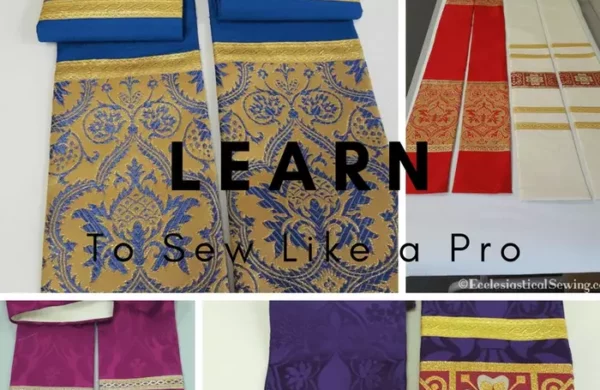
The Liturgical Arts Conference in Canton, MS, featuring vestment-making classes. Learn stole-making, pulpit falls, and explore new chasuble styles. Classes cover various aspects of the Liturgical Arts, providing a unique opportunity for hands-on learning
Like this:
Like Loading...
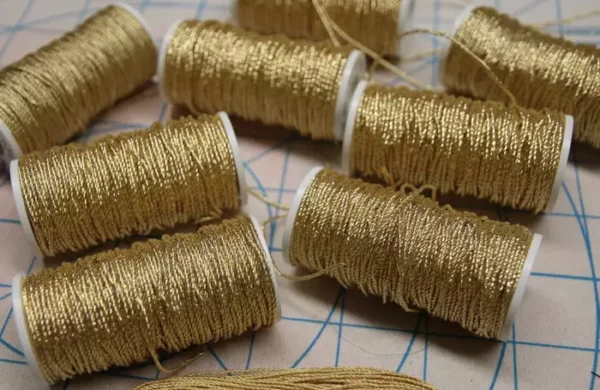
Gilt Twist goldwork threads, particularly in sizes No. 3 or No. 4 for outer edges and No. 1 1/2 or No. 2 for smaller areas, beautifully enhance goldwork appliques in embroidery. The choice of twist size depends on the design’s details and the width of the gold edge, ensuring a neat finish with one pass of stitching in pairs.
Like this:
Like Loading...
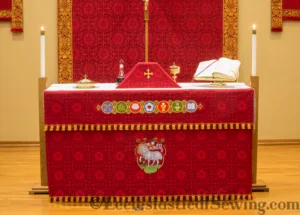
Reformation 2018 – 501 Years in the Making:: an incredible anniversary. The Reformation Embroidery Designs were created by Edward Riojas and Carrie Roberts. This set was the first major collaborative design collection created by both artisans and it marked the beginning of what has become a wonderful working relationship and friendship. The designs are unique in the world of vestment making.
Like this:
Like Loading...
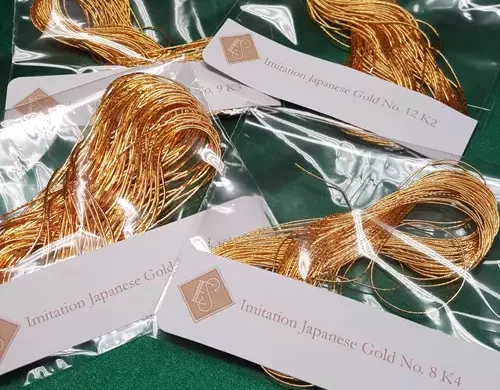
Those who love hand embroidery and goldwork, these are Imitation Japanese Gold threads available in sizes No. 13, No. 12, No. 9, and No. 8 which are also known as K1, K2, K3, and K4. The gold threads are used in pairs. The gold threads are often worked on a padded surface such as felt padding. They may also be used as a finishing edge around an embroidered applique. The gold foil has a lovely burnished color that looks fiery – gold in a finished project.
Like this:
Like Loading...
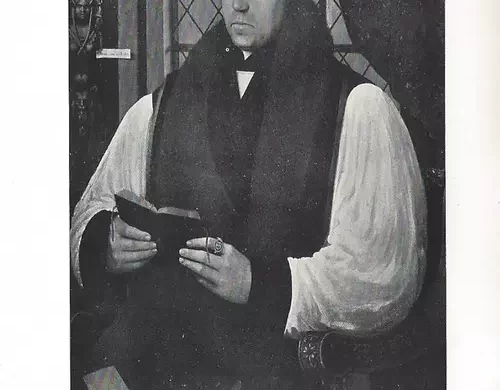
The tippet was originally a form of outdoor dress and it may have been fur-lined. Much of its history has been tied to academic use. Tippets have historically been made of silk fabric. The tippet is generally between 6″ to 10.5″ wide. The softer the fabric, the wider the tippet may be. The ends are usually finished with a plain simple hem. However, in the 19th century, the ends were finished with a zig-zag or pinked end.
Like this:
Like Loading...
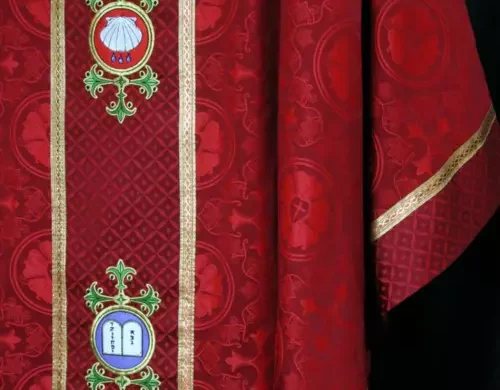
The Monastic style chasuble is a fuller, longer vestment, approximately 60 to 80″ wide and 54″ or more in length. With graceful folds, it suits both traditional and modern church settings. The larger size provides comfort in warm climates, allowing more airflow and movement. It can be created from various fabrics, from Liturgical Brocades to silks.
Like this:
Like Loading...
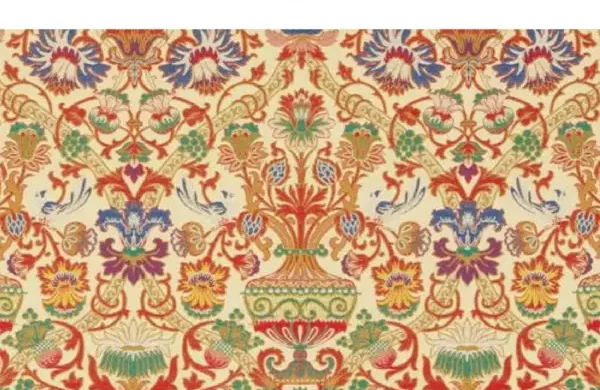
Tapestry fabrics used in churches today are woven into a rich palette of colors and patterns to delight the eye. The fabric is by nature a bit heavier than most liturgical brocades. And such rich detail – often like pictures. This detail requires the use of many threads or yarns in the weaving process.
Like this:
Like Loading...

Altar Guilds play an important role in the life of the church. Some churches have small altar guilds while others have large guilds. Altar guilds serve many functions in the life of the church. They care for the flowers, linens, and vestments at a basic minimum. They may make the linens and vestments, set communion, and so much more.
Like this:
Like Loading...
















You must be logged in to post a comment.